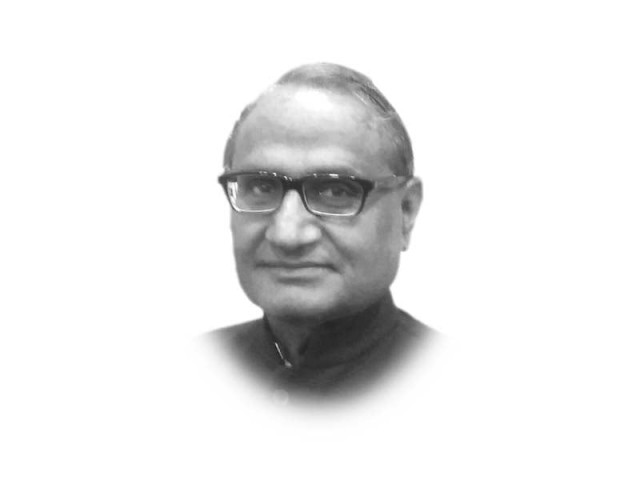Education on the electoral radar?
The PTI has been struggling to put education and health on the political agenda, but only in opposition

The writer is a senior political economist based in Islamabad
It did not come as a surprise when his large audience at a public meeting in Bannu the other day said ‘No’ when Imran Khan posed the question: Taleem theek hui? However, the relentless criticism of infrastructure projects by the PTI leadership has led to a policy shift in Punjab. The naming and shaming by the media by depicting the dilapidated state of schools in rural areas and deprived regions has also played a role. Last week, the chief minister of Punjab observed that the target of rapid development could only be achieved through the promotion of education. He described it as the only way to challenge poverty, unemployment and ignorance. A categorical commitment was made to achieve 100 per cent enrolment by 2018.
Significantly, the statement was made before elected representatives, not at a seminar organised by some donor or an NGO. Is education, at long last, on the electoral radar? The Parho Punjab, Barho Punjab programme is welcome political rhetoric, but the will to allocate adequate resources, their effective utilisation and regular monitoring of the outcomes will be the real way forward.
In 2010, when the expenditure on education had slumped to 1.7 per cent of the GDP, the 18th Amendment to the Constitution added, among other things, Article 25-A to recognise the Right to Education: “The State shall provide free and compulsory education to all children of the age of five to 16 years in such manner as may be determined by law.” Now mainly responsible for education, the provinces have enacted laws, but shied away from allocating enough money, despite a much larger resource envelop secured under the seventh NFC Award. Total expenditure on education did increase to 2.2 per cent of the GDP in 2015, but was still below the past achievement of 2.7 per cent and way below the promised four per cent mentioned in the education policy. Worse, the increase has mostly gone towards thoughtless expansion of higher education.
According to the PSLM, the Net Enrolment Rate (NER) for primary schools (6-10 years) declined from 68 per cent in 2012-13 to 67 per cent in 2014-15, the terminal year of the Millennium Development Goals that had the NER target of 100 per cent. For the traditional primary age group 5-10 years, the NER is even lower. The share of the public sector in primary school enrolment has come down to 62 per cent.
Article 25-A talks about children aged 5-16, making the net enrolment rate irrelevant. According to the National Management Information System’s report related to 2014-15, there are 50.8 million children in this age group, 47 per cent of which are out of school. These include all the stages of elementary education — primary, middle, secondary and higher secondary. In the primary age group, 5-9 years, the number of out-of-school children is 6.1 million, or 28 per cent. Punjab is better off than other provinces in relative terms, but its absolute share of some 4.6 million children out of schools is staggering. If a determined Punjab can focus only on this group, a giant leap forward can be expected by 2018.
Published in The Express Tribune, May 20th, 2016.
Like Opinion & Editorial on Facebook, follow @ETOpEd on Twitter to receive all updates on all our daily pieces.













COMMENTS
Comments are moderated and generally will be posted if they are on-topic and not abusive.
For more information, please see our Comments FAQ